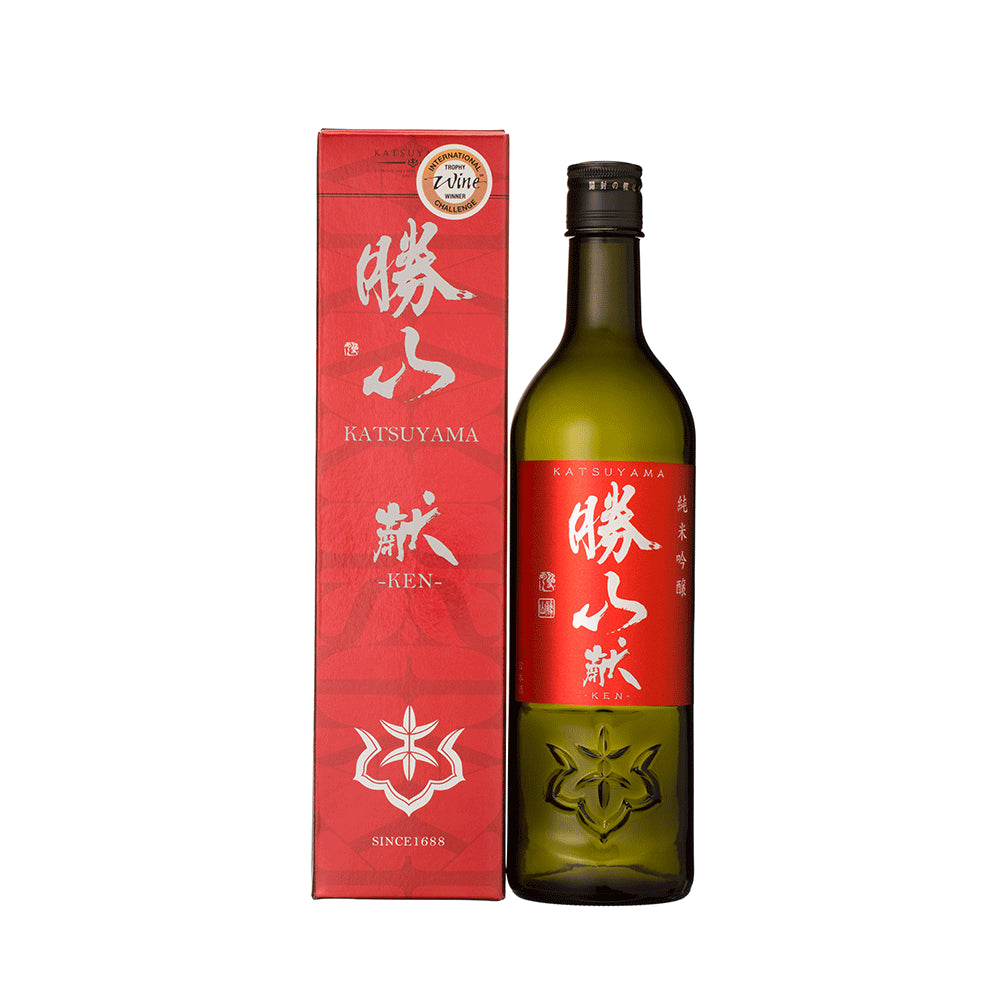-
 >
>
- Product list >
- Katsuyama Ken Junmai-ginjo (720ml)
Katsuyama Ken Junmai-ginjo (720ml)
詳しく見る
- *All prices shown are the product prices from the Japanpage:.
- *Product price can be shown in multiple currencies as reference values.
- *Payment should be made in Japanese yen.
- *After filling in delivery address, grand total (product price + shipping cost (packing + shipping + insurance) +tariffs & taxes) will be shown on the shipping cart page.
- *All prices shown are the product prices from the Japanpage:.
- *Product price can be shown in multiple currencies as reference values.
- *Payment should be made in Japanese yen.
- *After filling in delivery address, grand total (product price + shipping cost (packing + shipping + insurance) +tariffs & taxes) will be shown on the shipping cart page.
Awards
International Wine Challenge (IWC) 2019 Junmai Ginjo Division Trophy
Kura Master2018 Junmai Daiginjo & Junmai Ginjo Division Platinum
International Wine Challenge (IWC) 2018 Junmai Ginjo Division Gold
Sake Competition2016 Junmai Ginjo Division 1st place
Sake Competition2015 Junmai Ginjo Division 1st place
"Katsuyama Ken Junmai-ginjo (720ml)"is a Japanese sake, carefully brewed using "Yamada Nishiki" - a brewer's rice produced in Mirai, Hyogo Prefecture, polished down to a ratio of 50%. While mild in flavor, this elegant and refined sake has a beautiful fragrance, and a smooth taste which provides a well-rounded umami afterward. Slightly dry, with a gentle acidity, it has excellent umami and a delicately balanced structure, and is highly recommended for pairing with lightly flavored meals such as seafood. The name "Ken" bears the meanings "presentation" and "a wonderful gift." At the "International Wine Challenge (IWC)2019", the world's most prestigious wine competition, this Junmai Ginjo won the trophy awarded to the most excellent brand among gold medal-winning junmai ginjo sakes, establishing its place among the world's best.
Pairing food proposed from Vendor
White fish sashimi
About "Katsuyama"
Japanese sake "Katsuyama" inherits a tradition that has been established for more than 320 years. It is rumored that the origin of the name lies in the superstition that samurai won victories in heaps, and is associated with the "Katsuyama Chignon", a fashionable women's hairstyle in the early Edo period (17th century). It is a full-bodied sake made through a slow and luxurious preparation that involves producing only 1 tank per week, where the moromi (a mash of barley, barley koji, yeat and water) is carefully fermented.
Recommended temperature
- Atsukan (50 - 55℃)
- Jokan (45 - 50℃)
- Nurukan (30 - 40℃)
- Room temperature (15 - 20℃)
- Hanabie (10℃)
- Yukibie (5℃)
Type


Tag
Appearance
-
Clarity
Transparency
Hazy
-
Colour
Colorless
Dark brown
-
Intensity
Water
Deep
Nose characteristics
-
Intensity
Low
Strong
Taste characteristics
-
Light / Body
Light
Body
-
Sweet / Dry
Sweet
Dry
-
Simple / Complexity
Simple
Complexity
-
Acidity
Low
High
-
Umami
Low
High
-
Finish
Low finish
Long finish
Aroma and flavor
Detailed information
| Volume | 720ml |
|---|---|
| Size (L W H) | 8.5 x 8.5 x 29.5 cm |
| Weight | 1.2kg |
| Ingredients | Rice, Rice koji, Water |
| Region | Miyagi |
| Alcohol content | 16%vol. |
|
Sake Meter Value
|
+2 |
|
Acid level
|
+1.6 |
|
Polishing ratio
|
50% |









